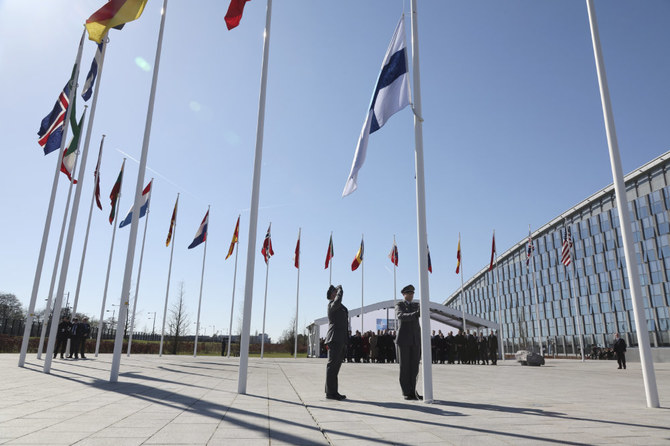Dr. Diana Galeeva
On Tuesday, Finland officially joined NATO, obtaining the status of the 31st member of the Western alliance. Together with Sweden, Finland applied to become a member in May last year, following Russia’s invasion of Ukraine. The Kremlin has already warned about “counter-measures” to Finland’s NATO membership. What is next? What does this mean for broader Russia-NATO relations? It is worth considering some of the implications and possible scenarios resulting from these actions.
In the Western press, among the most prevailing narratives is that, as AP puts it, “the move is a strategic and political blow to (Russian President Vladimir) Putin, who has long complained about NATO’s expansion toward Russia and partly used that as a justification for the invasion.” On June 17, 2022, US President Joe Biden said: “He (Putin) wanted a sort of Finlandization of NATO. He got the NATO-ization of Finland, instead.” This refers to the long-term neutral relations that have existed between Finland and the Soviet Union, as well as modern Russia, prior to the invasion of Ukraine. While Putin may supposedly have hoped that more NATO-leaning countries would adopt a cautious attitude in the face of Russian pressure and proximity, Biden instead projects the move as such non-alignment becoming less attractive, or even viable.
The position replaces a general preference for dialogue with an emphasis on deterrence. The shift was already evident under the previous leadership of the popular center-left leader Sanna Marin, who pushed for the idea to join NATO, receiving praise for successfully advocating for the move. In the recent elections of April 2, 2023, her center-left Social Democratic party increased its number of MPs but lost a very tight election overall, falling into third place behind the two right-wing parties. The conservative Petteri Orpo, leader of the National Coalition Party, is likely to be the next prime minister; the position on NATO is unlikely to change, however. Orpo campaigned strongly on economic issues, vowing to “fix Finland” and its economy. Orpo accused Marin of eroding Finland’s economic flexibility due to the energy crisis in Europe, which dramatically affected the country’s cost of living. This does suggest that the policy of the newly elected government might focus more on the internal development of the country rather than links with European partners.
At the same time, in his victory speech Orpo said: “First to Ukraine: We stand by you, with you… We cannot accept this terrible war. And we will do all that is needed to help Ukraine, Ukrainian people, because they fight for us. This is clear.” Moreover, the Finnish public’s view has changed dramatically since Russia’s invasion. According to polls from YLE & Demoskop, in 2017, Finnish citizens were 19 percent in support of NATO membership, while in 2022, 68 percent supported the move. Therefore, at both the leadership and public level, there is a consensus around the significance of the current security concerns.
Obviously, this decision may further damage relations between Russia and NATO. The Finnish-Russian border is sensitive. It runs roughly north-south for some 1,340 km, mostly through unhabituated taiga forests and sparsely populated rural areas. It is a significant and difficult zone to patrol. There is also a symbolic aspect, since the new configuration means that the territory of a NATO member will be much closer to Russia’s former imperial capital (and major cultural center) – St. Petersburg. The distance from the border is just 435 km. Russians are sensitive to the shift. A “Stop NATO” demonstration was held outside the US Embassy in Moscow on Tuesday. Alexander Grushko of the Russian Foreign Office said that the country aims to strengthen its military presence in the western and northwestern areas.
Asked about a scenario in which Finland was attacked, Jens Stoltenberg, the NATO chief, said: “Finland will get an iron-clad security guarantee. Article 5 — our collective defense clause ‘One for all and all for one’ — will now from today apply to Finland.” This means both more protection for Finland but also escalating risks, since any incident may lead to greater consequences.
Fortunately, this scenario seems unlikely. Indirect confrontation between Russia and NATO members is already happening in Ukraine. Notably both sides are working hard to avoid a shift to direct confrontation, which would effectively mean a third world war starting in Europe. Recent nuclear rhetoric has made the devastating possibilities here all the clearer.
However, the problem of relations between Russia and NATO simply won’t go away, and has reached ever higher levels of mistrust. “Democracy” versus “autocracy” is a continuing crisis in international relations, and both sides have been forced to consider whether military scenarios may be inevitable. Given this, one option might be to seek to change the venue of the confrontation away from Europe, again seeking indirect means. One of the potential places for continuing indirect great power competition may turn out to be involvement in a conflict between China and Taiwan. But even in this case, a third world war looms large. Perhaps it is time for all sides to call for greater diplomacy and dialogue, before the military posturing gains too much momentum of its own.







